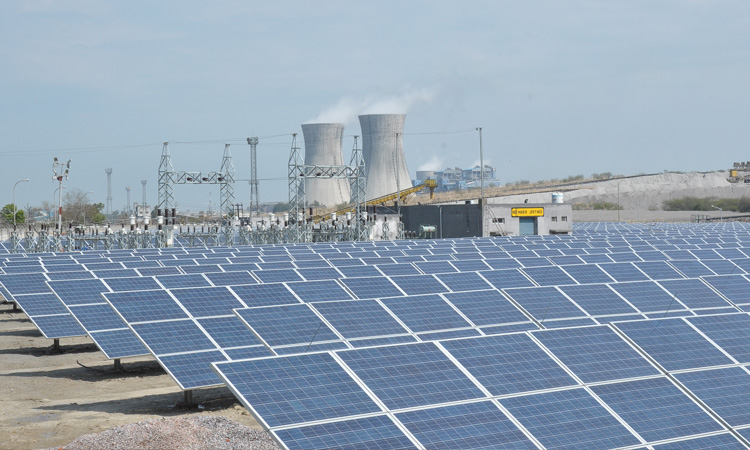India will add solar power capacity of 48-50 GW between fiscals 2019 and 2023. The total installed solar capacity will reach 70 GW by FY 2023. Of this, 8 GW will come from rooftop projects, led by high industrial and commercial tariffs and declining levelised cost of energy for solar rooftop projects—according to a report by ratings agency Crisil Research.
While commissioning is expected to slow down in FY19 due to the impact of the safeguard duty and Goods and Services Tax (GST) issues, FY20 is weak due to delay in auction as several tenders got delayed/cancelled. However, FY20 onwards, additions are expected to pick up due to several factors: Subsiding of/removal of the safeguard duty easing cost pressures; commissioning of capacities auctioned with amended commissioning schedules of 21-24 months coupled with tenders now allocated with schedules of 15-18 months and aggressive tendering expected prior to FY22 (which is milestone year), said the report.
However, consistent regulatory support, adequate land availability, timely implementation of grid infrastructure, and the ability of players to raise low cost funds are key risks which constrain the outlook, it added.
Pricing impasse slows momentum
Over fiscals 2017 to 2019, while previously tendered capacities continued to be commissioned apace, certain risks to future project implementation manifested. There were frequent bid cancellations, lack of clarity on GST procedures, and cost pressure from the imposition of the safeguard duty on imported cells/modules.
The 25% safeguard duty on all imported cells/modules, except from developing countries (but including China and Malaysia) has had a direct impact on capital costs raising it by 10-15%, despite module prices falling from US$ 0.30/Wp in March 2018 to US$ 0.24/Wp in December 2018. As a consequence, bid tariffs have moved up in the range of Rs 2.7-2.9 per unit, to be able to sustain current capital costs of Rs 34-35 million per MW.
This led to cancellation of bids post auctions as state utilities/SECI found tariffs to be higher than expectations. Already allocated capacities were cancelled at the pre-power purchase agreement (PPA) signing stage. This lowered developer/investor confidence, further discouraging participation in auction activity.
As a result, there is a pile-up of tenders in the market with frequent delays in auctioning due to poor bid response. Consequently, the capacity addition pipeline has turned weaker for fiscals 2019 and 2020, as commissioning is getting delayed.
The GST imposition has increased taxation rates across all components required to develop a solar power plant, and created much confusion over the final tax rates applicable on a solar power project.
Declining safeguard duty trajectory to help
As the safeguard duty rate declines to 20% from July 2019, it would give developers who participate in auctions post January 2019 the leeway to procure when the rate is lower. The same would hold true when rates go down to 15% after January 30, 2020. Hence, over the long term, once duty rates decline, as they should in a time bound manner, cost pressures would ease and tariffs would also start easing by 5-10 paise per unit.
Supportive policy delivery crucial
While a decline in safeguard duty rates over a two-year period would help in lowering cost pressure, this has to be coupled with regulatory support that recognises prevailing market dynamics.
There are other issues as well, where overall policy coherence from the government is imperative. While there is ample government support in terms of allocations and incentives, confusion has been created by policies under other government agencies.
For instance, clarification on the GST procedures and its implementation for solar was not forthcoming for over a year, impacting commissioning schedules and project costs across developers.
The outlook still fairly positive
The outlook still remains fairly positive for the sector as the government remains ambitious about achieving its fiscal 2022 target.
Further, recent amendments have provided fillip for the renewable energy market in India. One is the upward revision in solar Renewable Purchase Obligation (RPO) achievement target from 8% earlier to 10.5% by fiscal 2022. Two, is the waiving off of the interstate transmission charges and losses on solar power till fiscal 2022.
This content is protected by copyright and may not be reused. If you want to cooperate with us and would like to reuse some of our content, please contact: editors@pv-magazine.com.









By submitting this form you agree to pv magazine using your data for the purposes of publishing your comment.
Your personal data will only be disclosed or otherwise transmitted to third parties for the purposes of spam filtering or if this is necessary for technical maintenance of the website. Any other transfer to third parties will not take place unless this is justified on the basis of applicable data protection regulations or if pv magazine is legally obliged to do so.
You may revoke this consent at any time with effect for the future, in which case your personal data will be deleted immediately. Otherwise, your data will be deleted if pv magazine has processed your request or the purpose of data storage is fulfilled.
Further information on data privacy can be found in our Data Protection Policy.